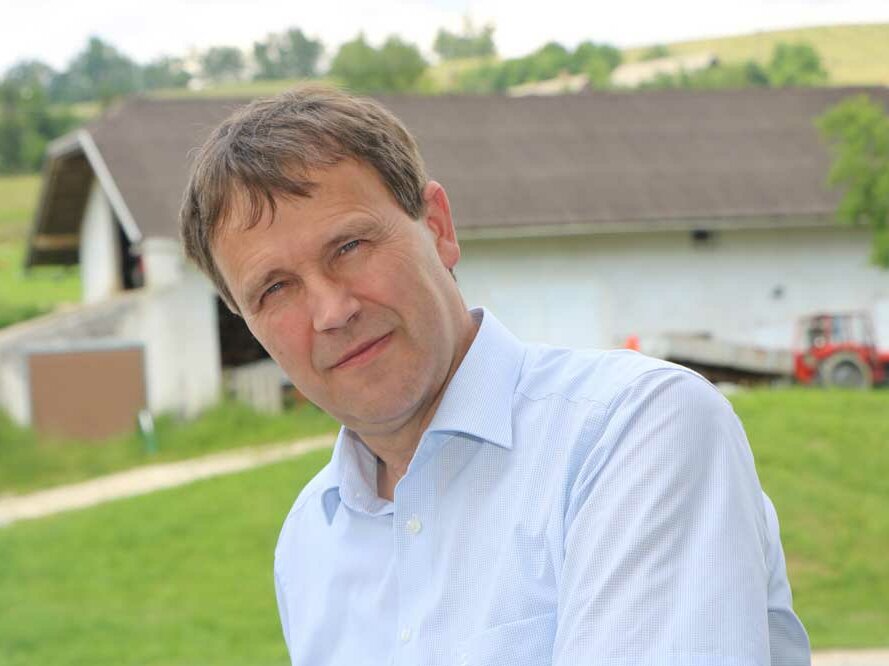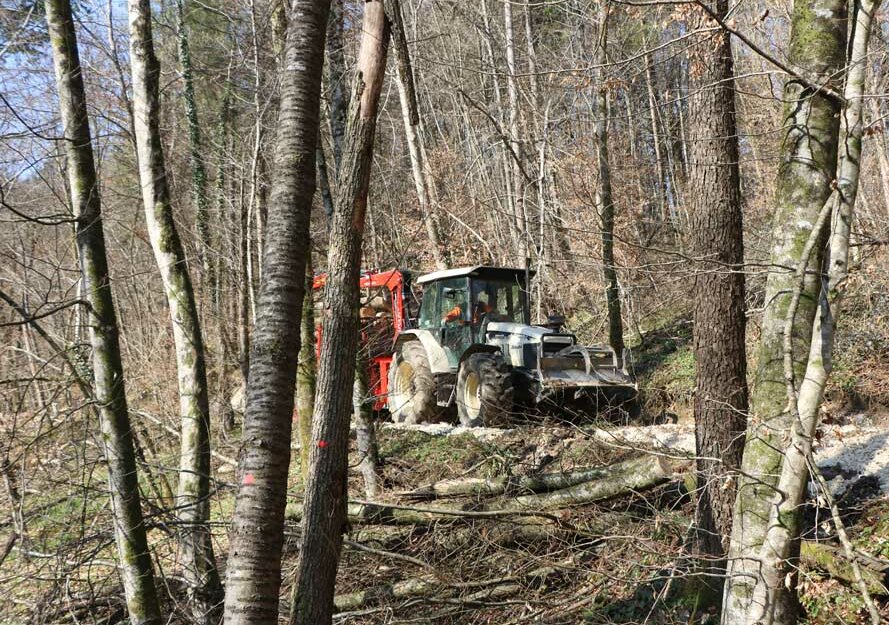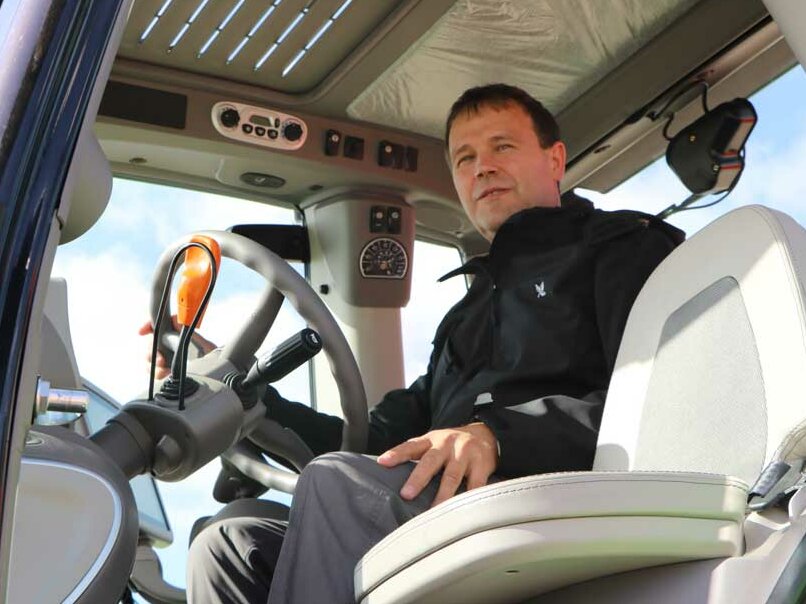Marjan Dolensek - Harvesting energy and hydro electricity
Interview by Erminia Ciarleglio
Marjan Dolensek from Slovenia has been a member of the DLG since 1996. His profession is adviser in agricultural and forestry mechanisation. But he also owns a farm and some forest with special enterprises that include marketing timber as an energy fuel and selling electricity generated by waterpower on his land.
Marjan Dolensek, what are the challenges faced by your business enterprise in Slovenia?
Our business is comparatively small and this means we cannot fully exploit mechanisation to reduce costs. The land itself comprises 7 ha of farmland where we used to run cows, and which is now rented out. Our forest covers 22 ha of mainly deciduous trees which we manage ourselves.
Harvesting is only possible in the classical way with chain saws and tractor extraction. The wood aimed at the timber market is handled by machinery ring professionals. We deal with the non-commercial timber ourselves, producing some 80 m3 woodchips per year for heating our and our parents' houses. Another enterprise with considerably less labour input is a hydro electricity generator which we have fitted into a former water-driven mill with a nominal output of 5.5 kW.
Could you give us an insight of the farm sector in your country?
Slovenia is one of the smaller EU member countries, covering around 20,200 km2 with 2 million inhabitants and stretching from the Adriatic Sea in the south to Austria and Hungary in the north. Some 70,000 farms average just under 7 ha farmland and 5.6 ha forest. Only around 5.5 % of farms comprise more than 20 ha farmland and just 10,000 farming businesses in the country are registered as full-time.
Arable farming and pig production are main enterprises in the east of the country while, to the west, Mediterranean crops rule in the form of wine, fruit and vegetables.
Cattle enterprises are the mainstay in the north and central areas. Especially where farming units are smaller, the sector tends to be seen as important for social infrastructure and the support of cultural landscape rather than solely food and feed production.
Something like 60% of your country’s total land area is afforested, one of the highest proportions in the whole of Europe. What role does farming, commerce and industry play in the national economy?
Our timber output has actually decreased over the past three decades and we do not even process much of the wood we produce, quite a lot being exported nowadays to Austria and Italy. Counting the agricultural output as well as that of forestry, only some 2.3 % of the gross national production comes from the land. Industry (steel, cars, pharmaceuticals, electrical manufacturing), tourism and services represent important earners in Slovenia.
You are also mechanisation adviser to the agricultural and forestry sectors in your country. What do you see as the most sustainable technologies in these fields?
In timber production, protection of not only the people working in forestry is crucial, but also of the young trees and the ground conditions. This means that fully mechanical tree harvesters are important if it’s possible to use them. Forestry work should be “professionalised” so that the labour involved can employ more skill with increased safety in what, after all, can be a hard and dangerous job. Especially inexperienced and untrained owners of woodland should also be included in specific training.
As far as agriculture is concerned, the emphasis must be on training towards precision farming involving machinery that ensures accurate application of only necessary inputs and, for instance, reduction of pesticides through increasing mechanical weeding procedures. Coming more into use is automation, data processing with more electricity powering field equipment.
These new technologies should not only be steered towards lightening the labour load on the land, but also in making the profession healthier with less dust, heat and dangerous input materials. Increasing technical sophistication does, however, bring with it the dangers of farmers becoming more dependent on outside services because machinery becomes too expensive for a single farm, while individual family farm incomes may not necessarily be increased.
One point that should not be forgotten with modern machinery developments: many of such new technologies are still in the starting phase with “teething problems” still to be fully appreciated. Time will tell what trends will survive – in technical terms as well as economical ones.
You have been a DLG member for over a quarter century now: how has the society supported you over this period?
Through providing information, more information and still more information! In all possible forms. From published articles, test reports – through to seminars (lately in online format and therefore even more accessible), exhibitions (such as Agritechnica), field days, and so on. Each one of these sources represents individually small, but still very important stones in the mosaic of my personal knowledge on how I can carry out my work still better through transmitting advice and knowledge towards helping farmers and foresters with modern decision making.








